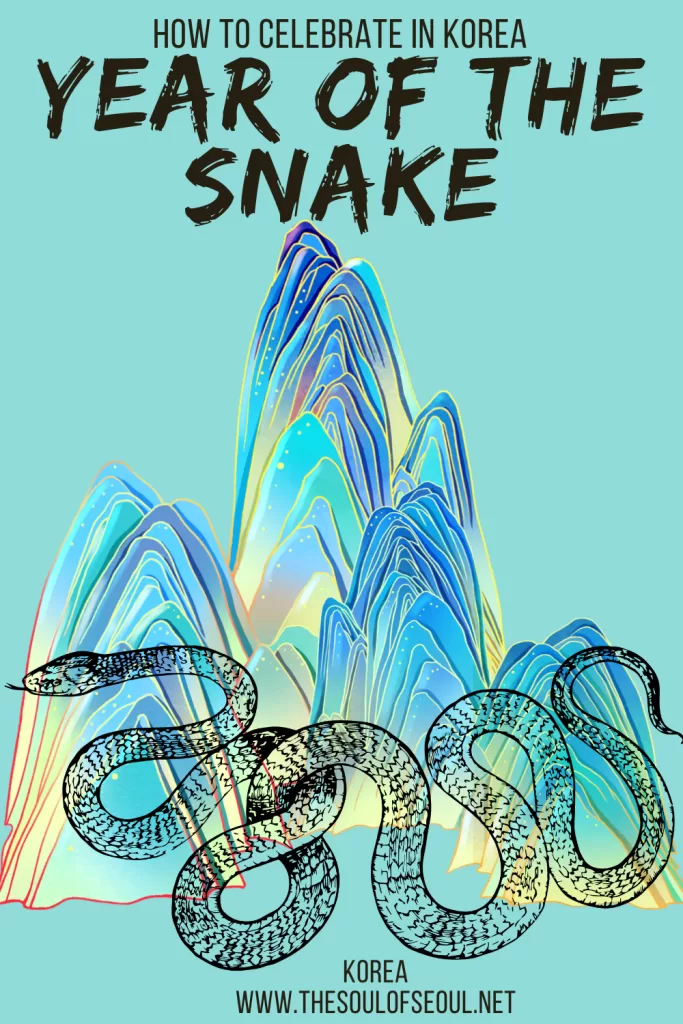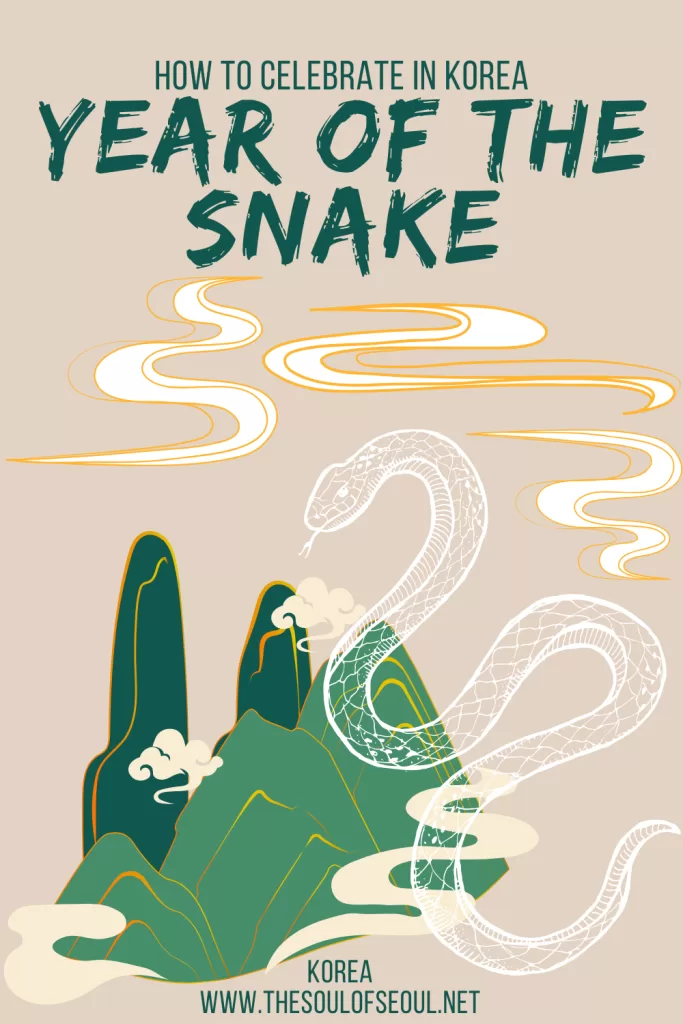How To Celebrate The Year of The Snake In Korea
Last Updated on December 20, 2024
Happy New Year! 2025 is the Year of the Snake or the Year of the Serpent, the green snake or wood snake to be precise. The snake is the sixth animal in the zodiac and is a symbol of wisdom and resurrection because it sheds its skin and hibernates to regenerate.
In Korean, this year is called “Eulsa” (을) and if you want to celebrate the Year of the Snake in Korea, there are a number of things you can do.
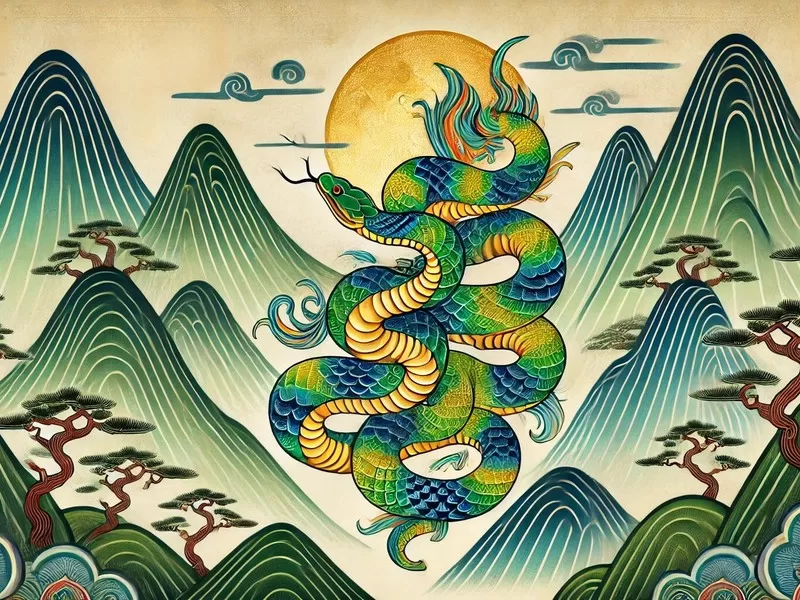
So, what does the Year of the Snake mean? And, how can you celebrate the Year of the Snake in Korea? Here’s what you need to know…
(This post contains affiliate links, which means I receive a certain percentage of a sale if you purchase after clicking at no cost to you. Thank you for your support.)
The Snake in Korean Folk Tales
In Korean households, snakes weren’t just unwelcome intruders—they were revered protectors. Folk beliefs saw them as guardians of the home, embodying good fortune and safety. A snake spotted near the house wasn’t driven away or killed; it was honored as a deity in disguise. On Jeju Island, this reverence ran deep.
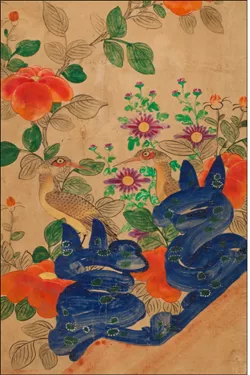
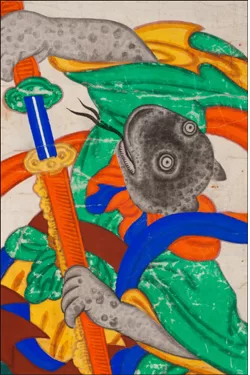
Whether feared or revered, the snake in Korean folklore slithers between worlds: earth and sky, good and evil, man and spirit. It’s a creature of transformation, a symbol that has inspired awe for centuries.
Snakes dominate Korean folk tales more than any other zodiac animal, likely because they embody such striking contradictions. Feared for their poison but celebrated for their mystical qualities, snakes represent both danger and divine mystery.
People might shudder at the sight of a snake but are equally drawn to its allure. This paradox extends to their treatment in myths—snakes are depicted both as malevolent figures of revenge and greed and as noble creatures of patience, enduring centuries to fulfill their destiny.

But beyond their physical traits lies a captivating legend: the snake’s potential to transform. With time and growth, a simple snake becomes a serpent, and from there, a hornless dragon known as Imugi. Should the Imugi seize the mythical Cintamani jewel (如意珠) or encounter a rare opportunity, it ascends to the skies as a mighty dragon—a creature of ultimate power and respect. This journey from the earthbound snake to the celestial dragon is a cornerstone of Korean mythology.
What Will The Year of the Snake Bring
The Year of the Snake in 2025 is expected to bring a time of transformation, growth, and personal development. The snake’s ambition and determination may help with career advancement, but snakes should be careful not to be too aggressive.
The year may be a time for self-discovery and inner growth, with opportunities for personal or professional reinvention. The wood element of 2025 may lend the snake’s traits greater versatility, growth, and creativity.
Fun Fact: When a serpent appears in your dream, Koreans believe it is a sign of a pregnancy or abundance in expectancy.
How To Celebrate
There are a lot of great exhibitions in Korea to learn more about the animal of the year and how Koreans celebrate.
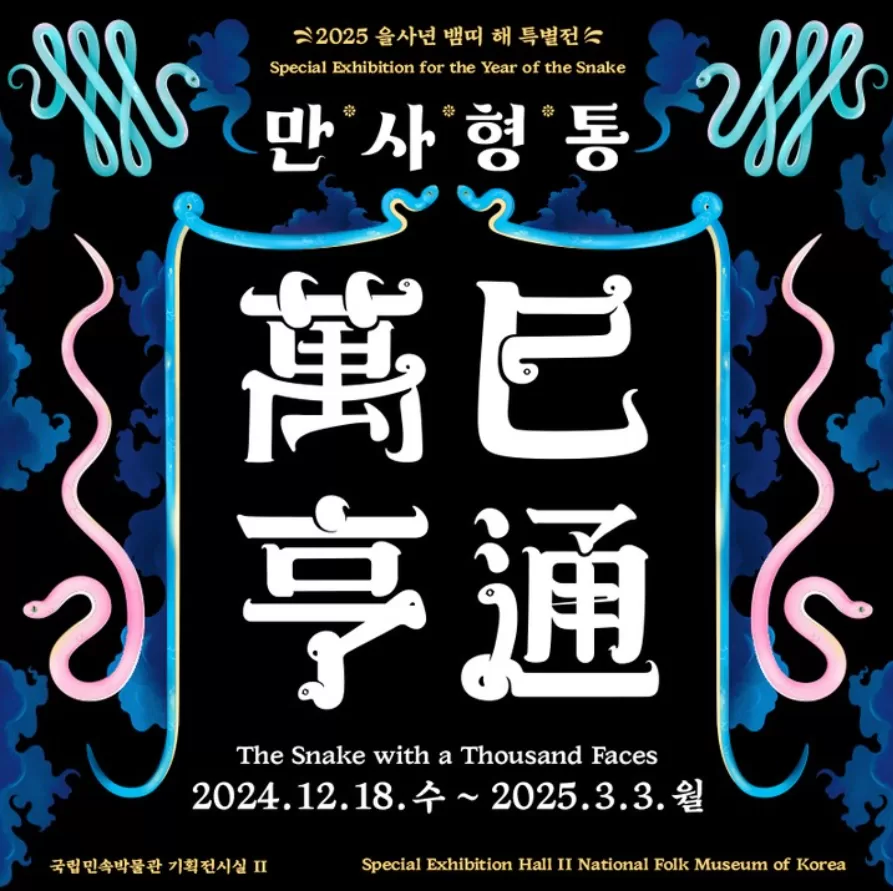
The National Folk Museum of Korea (국립민속박물관)
The museum which sits on the grounds of Gyeongbukgung Palace is holding an exhibit titled “The Snake with a Thousand Faces” centered on the Year of the Snake appropriately. The National Folk Museum of Korea hosts events and fun in the grounds out front every year and is a gorgeous place to learn about history and culture. After finishing up there, head across the street to the Museum of Modern & Contemporary Art.
- Address: 30 Samcheong-ro, Jongno-gu (서울 종로구 삼청로 37)
- Hours: 9:00AM – 5:00PM; events outside start from 11:00AM and run until 4:00PM* Note, the museum is closed on Seollal day, but open on the days surrounding it.
- Admission: Free; some events cost a small fee to partake
- Amenities: Strollers and wheelchairs are available free of charge, audio guides available for W1,000
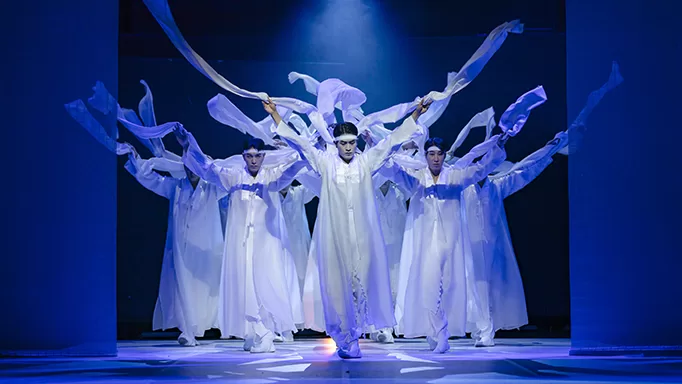
National Theater of Korea (국립극장)
The National Theater of Korea opened in 1950 as the first national theater in Asia. It is the only theater that produces performances that integrate traditional and contemporary arts, and has four theater stages of varying size.
In 2025, the Year of the Blue Snake, the National Dance Company of Korea will present a grand celebration of Korean dance at the Haeoreum Theater on January 29 and January 30. The performance features both traditional dance repertoires embodying elegance and formality, as well as creative dances, adding splendor and excitement to the holiday season for the whole family. It is a must-see for those who enjoy a unique cultural outing during the Lunar New Year holiday.
- Address: 59 Jangchungdan-ro, Jung-gu, Seoul (서울특별시 중구 장충단로 59)
- Book tickets on their website: https://notok.go.kr
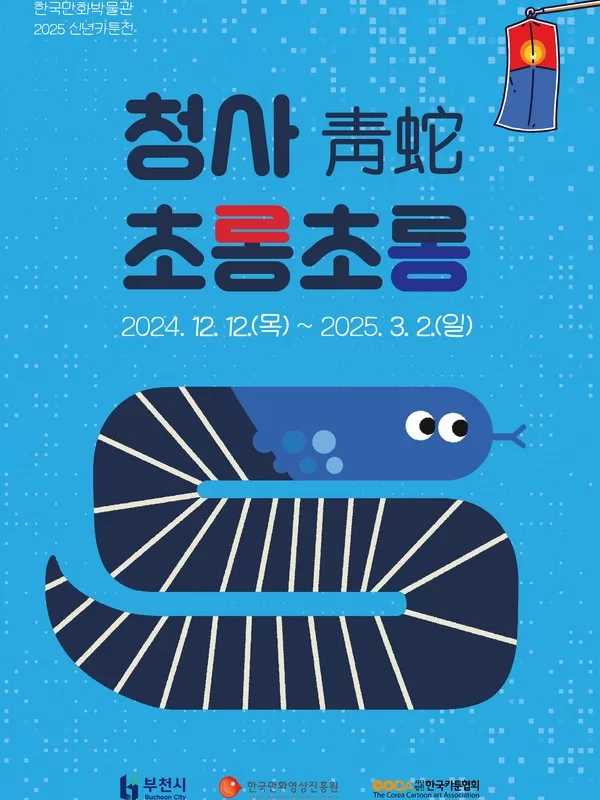
The Korean Cartoon Museum (한국만화박물관)
Hosting an exhibition titled “Chorong” from December 12, 2024 to March 2, 2025, The Korean Cartoon Museum brought together 63 cartoonists from eight countries to express hopeful energy under the theme of snakes, which symbolize vitality, wisdom, and change.
- Address: (경기 부천시 원미구 길주로 1)
- Hours: Tuesday – Sunday: 10:00am ~ 6:00pm
- Website: https://www.komacon.kr/
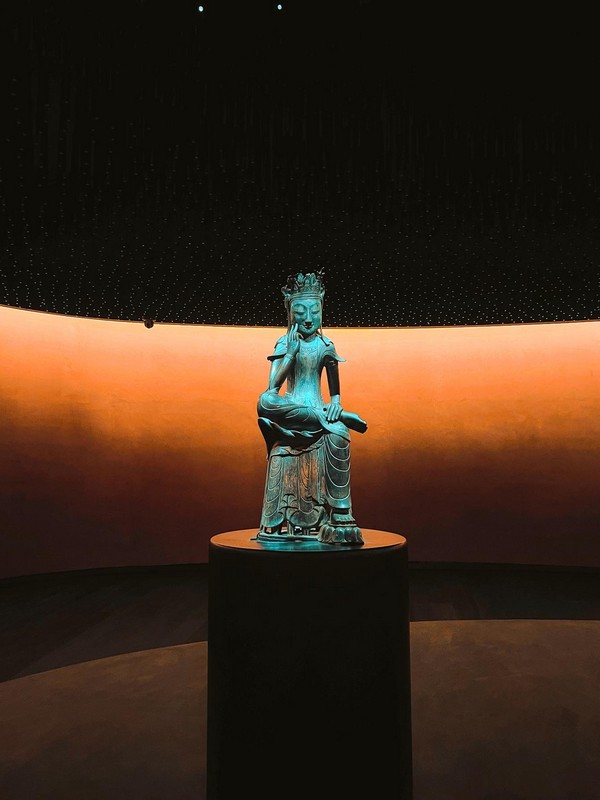
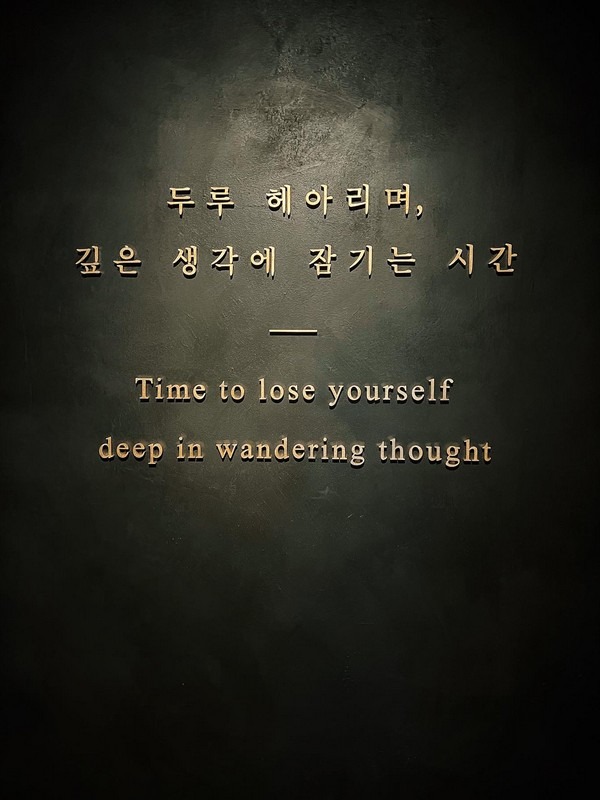
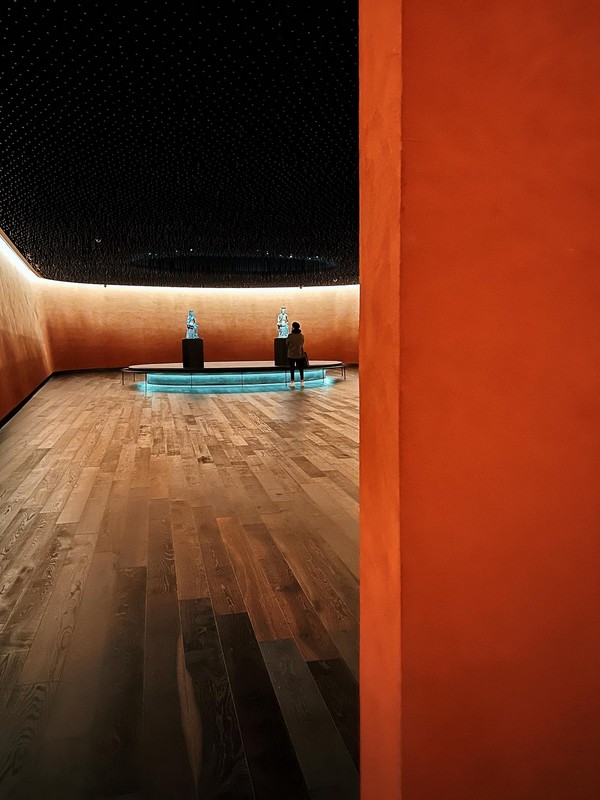
The National Museum of Korea (국립중앙박물관)
The National Museum of Korea is fantastic and FREE! If you want to have a fun scavenger-hunt like experience finding serpents in historical paintings and prints, head here. The collection is not only amazing and would take days to see thoroughly, but there is plenty of opportunity to learn and really see how snakes were represented in historical works.
- Address: 137 Seobinggo-ro Yongsan-gu, Seoul, Korea (서울특별시 용산구 서빙고로 137 (용산동6가))
- By Subway: Ichon Subway Station exit 2 OR bus #502
- Admission: Free, special exhibits are charged separately
- Hours of Operation: Monday, Tuesday, Thursday, Friday: 10:00am ~ 6:00pm; Wednesday, Saturday: 10:00am ~ 9:00pm; Sunday, National Holidays: 10:00am ~ 7:00pm
- Closed: New Year’s Day (January 1), Seollal (Lunar New Year’s Day), Chuseok (Korean Thanksgiving Day) / Permanent Exhibition Hall closed: First Monday of every April and November annually
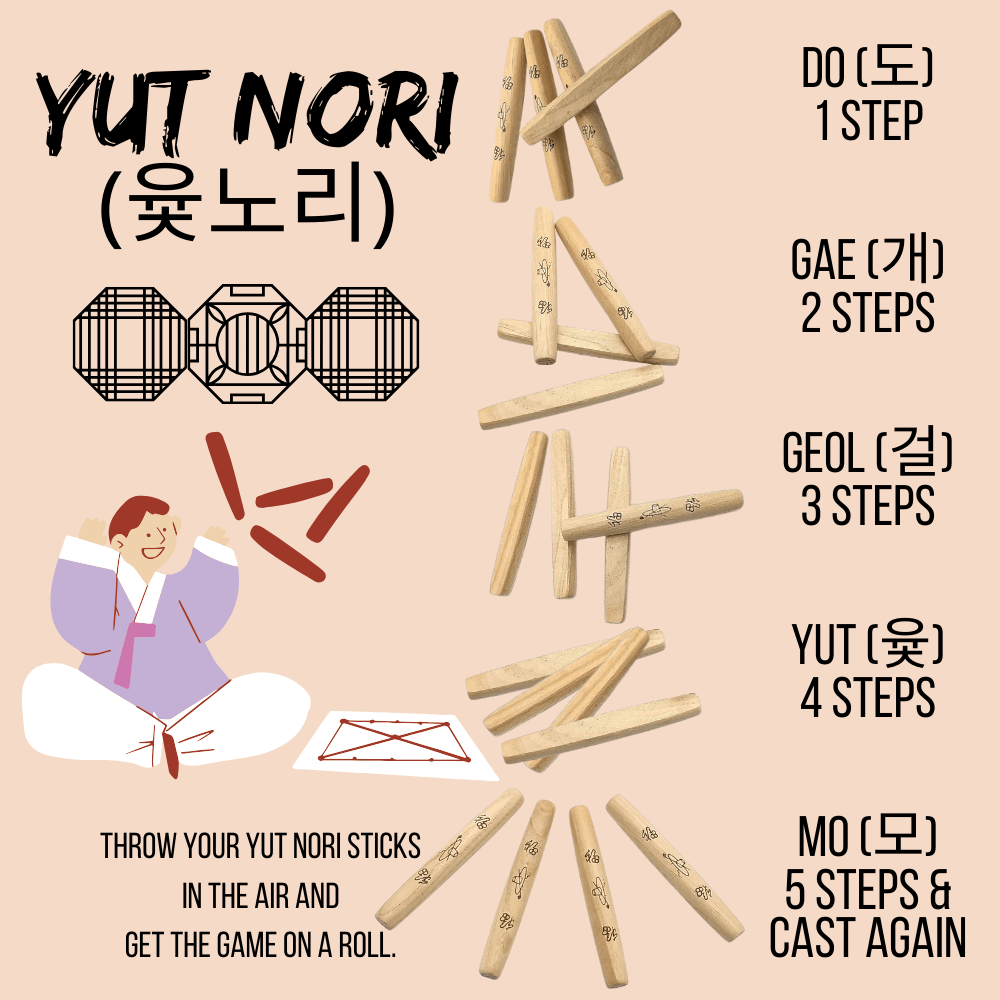
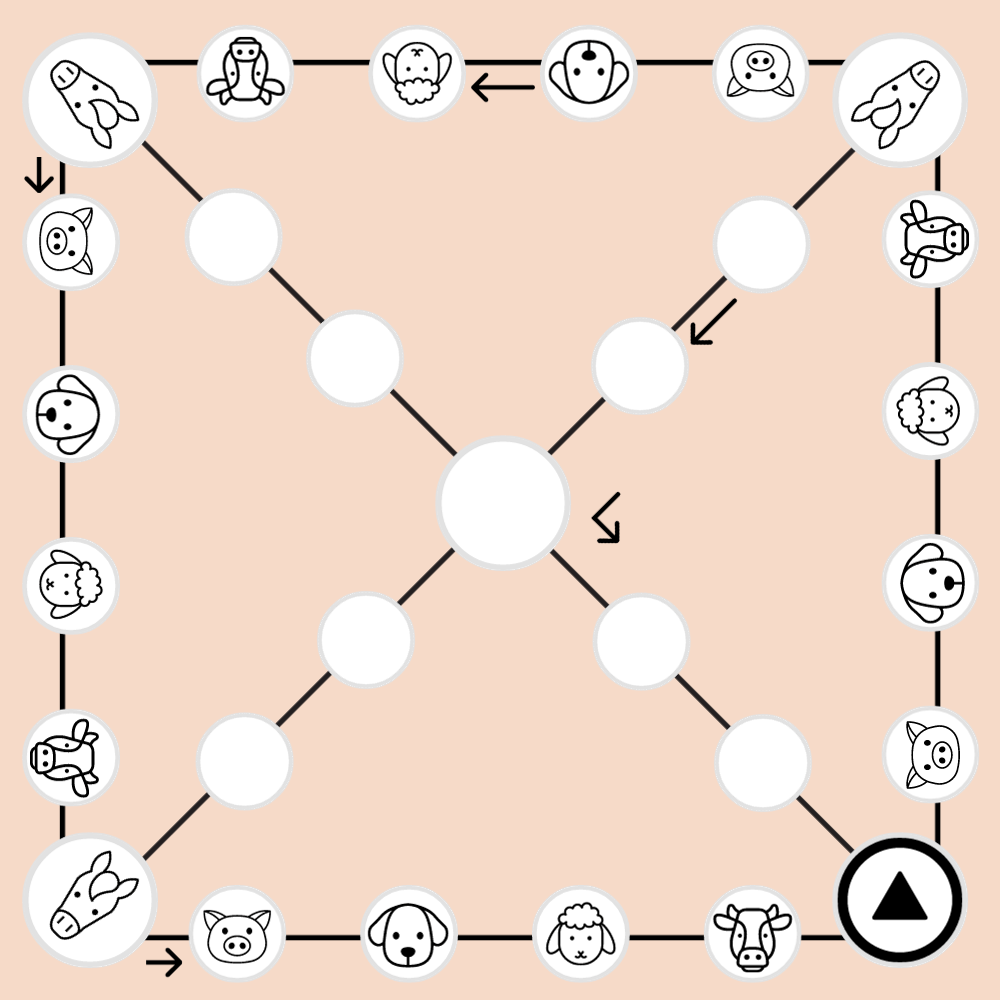
Play Yutnori
Another way to tell your future is to play the traditional Korean game known as yutnori. The game actually started out as a form of fortune telling to see whether the new year would bring about a good harvest or not. Each space on the board has a different name and symbolizes going through the seasons.
See What Awaits You In 2025 With A Saju Reading
Fortune telling is a pretty popular pastime for many in Korea. A form of entertainment, but also a guide for many life choices, having a Saju reading is an especially popular experience between December and February as people look to the new year.
Saju is a practice that analyzes the cosmic energy at the hour, day, and year of a person’s death. You’ll want to go with someone who can help translate if you don’t speak Korean and want to understand fully, though there is a saju cafe in Hongdae that offers English translation services.
Jaeminan Jogakga (재미난조각가 타로&사주출장소)
- Address: 26 Wausan-ro 21-gil, Mapo-gu, Seoul (서울 마포구 와우산로21길 26 1층)
- Hours: Every day: 12:00pm ~ 2:00am
- Website: http://www.funnysaju.com/
Are you ready to celebrate the Year of the Snake in Korea? Now you are! Have fun!
Did you like this post? Pin iT!
